Apex Legends Class System: Comprehensive Guide to Classes and Perks
Updated On: November 12, 2025 by Aaron Connolly
Understanding the Apex Legends Class System
Apex Legends sorts all legends into five main categories. Each one gets unique perks that really change up how teams play.
Respawn Entertainment shook up the whole system in Season 16. They wanted to add more strategic depth and make team composition actually matter.
Purpose of the Class System
The devs created the class system to give every legend a distinct role, not just a set of abilities.
Before Season 16, legend categories didn’t mean much at all. Respawn wanted to push players toward more strategy when picking teams.
Each class now brings specific perks that encourage different playstyles. You get a real reason to mix things up.
The five classes are:
- Assault: Combat initiation and utility
- Controller: Area setup and control
- Recon: Enemy intel and tracking
- Skirmisher: Combat mobility and escape
- Support: Team survival and supply
This setup helps new players figure out what each legend does for the squad. It also lets teams create combos that work well together in matches.
Major Changes in Season 16
Season 16: Revelry brought the biggest shake-up Apex Legends has ever seen. Respawn basically changed how every legend fits into a team.
Key changes:
- Survey Beacons stopped showing ring info for Recon legends.
- Controller legends got exclusive access to new Ring Consoles.
- A Smart Loot system appeared in red Weapon Supply Bins.
- Support legends found hidden compartments in Extended Supply Bins.
- Skirmisher legends could now scan Supply Drops for better loot info.
Recon legends can’t predict rings anymore, but they now track enemies using Survey Beacons. Controller legends took over ring knowledge with their consoles.
Assault legends grab 20 extra rounds per ammo slot. Support legends can craft Banner Cards for teammates even after their timers run out.
Impact on Gameplay Strategy
The class system totally changed how teams approach every match. Picking legends now takes real thought about strategy and team comp.
Some things to consider:
- Early game: Assault legends grab red Supply Bins for better guns.
- Mid game: Controller legends hunt for Ring Consoles to get good positioning.
- Late game: Support legends can bring back expired teammates.
Teams that mix classes get way more out of their comp than squads that pick three similar legends. A balanced team might run an Assault, a Support, and a Recon legend.
This update really shook up the meta. Gibraltar and Lifeline suddenly mattered more in ranked because of their Support perks.
Skirmisher legends stayed popular in high-level play, even though their class perk is kind of weak. Their movement skills still make up for the so-so Supply Drop perk.
Overview of All Legend Classes
Apex Legends splits its roster into five classes: Assault, Skirmisher, Recon, Controller, and Support. Each one brings special perks that can totally change your approach, whether you want more ammo, exclusive bins, or scanning abilities.
Assault Legends
Assault legends focus on starting fights and keeping the pressure up. You get Ash, Bangalore, Fuse, Mad Maggie, and Revenant here.
Their biggest perk is access to Red Supply Bins. These bins have hidden spots with smart loot that matches your weapons. You’ll find attachments and ammo that actually fit your loadout.
Assault legends also get to carry more ammo per slot. That means you stick in fights longer and don’t have to worry about running dry so fast.
Bangalore brings smoke and artillery strikes. Fuse loves blowing things up with grenades and knuckle clusters.
Mad Maggie highlights enemies through smoke and can drill through walls. Ash has that snare for trapping and a portal for sneaky moves.
Revenant disrupts abilities and gives the team mobility with his death totem. This class is for players who want to take fights head-on and keep the heat on enemy squads.
Skirmisher Legends
Skirmisher legends are all about movement and fast repositioning. This class includes Horizon, Mirage, Pathfinder, Octane, Wraith, and Valkyrie.
Their perk lets you see what’s inside care packages before they hit the ground. You’ll know if it’s worth fighting for or if someone else got there first.
This info helps you decide which drops to contest. You can also keep tabs on enemy teams by seeing which packages have been opened.
Pathfinder brings ziplines and grapples for team movement. Wraith creates quick escapes with her portals.
Octane gives speed boosts for flanking. Horizon controls high ground with her lift.
Valkyrie scouts from the air and helps reposition everyone. Mirage just messes with enemies using his decoys.
These legends fit players who like to stay mobile and hit fast.
Recon Legends
Recon legends gather info on enemy squads. The lineup is Bloodhound, Crypto, Seer, and Vantage.
Recon legends scan modified Survey Beacons to reveal all enemy locations for 30 seconds. The scan covers a huge area, but it warns enemies they’ve been spotted.
Bloodhound tracks movement with scans and beast mode. Crypto uses his drone for surveillance and EMPs.
Seer finds enemies through walls with his heartbeat sensor. Vantage scouts from long range with her tactical and sniper ultimate.
Survey Beacon scans make it easy to third-party fights. You can see where squads are fighting and decide when to jump in.
These legends are perfect when your team needs intel before making a move.
Controller Legends
Controller legends lock down areas and hold defensive spots. The roster is Catalyst, Caustic, Rampart, and Wattson.
They get exclusive access to Ring Consoles. These reveal the next ring location before anyone else knows.
Getting ring info early means you can set up defenses before other teams show up. You can take the best buildings and choke points ahead of time.
Caustic fills rooms with gas traps. Wattson builds fences that slow enemies and block grenades.
Rampart puts up walls and heavy machine guns. Catalyst uses ferrofluid for temporary walls and slowing pushes.
These legends shine if you want to control space and force enemies into tough spots.
Support Legends
Support legends keep teams alive and loaded up. The class includes Gibraltar, Lifeline, Loba, and Newcastle.
Support legends open hidden compartments in blue Extended Supply Bins for extra healing and gear. They can also craft expired teammate banners at any Replicator.
Banner crafting keeps your squad in the game, even if someone’s timer runs out. You get a second chance.
Lifeline gives quick revives and healing drones. Gibraltar drops dome shields and defensive bombardments.
Newcastle builds mobile cover and revive shields. Loba brings high-tier loot with her black market.
Support legends are vital for survival and work best if your team values positioning and smart rotations over just pushing every fight.
Assault Class: Combat Initiation and Loot Advantages
Assault legends are built for starting fights and getting in enemies’ faces. They get big loot perks and can carry more ammo, making them perfect for long, drawn-out battles.
Legend Specialities
The Assault class features Bangalore, Ash, Fuse, Mad Maggie, and Revenant. Each one brings something unique to the brawl.
Bangalore uses smoke for cover and calls in artillery to control space. Her smoke canisters give you room to push, and her ultimate keeps enemies pinned down.
Ash traps enemies with her snare and opens portals for quick attacks or escapes. Fuse just loves chaos—his cluster bombs and Motherlode can trap squads in tight spaces.
Mad Maggie smashes through buildings and speeds up when holding a shotgun. Her wrecking ball makes things messy, and her passive lets you move fast with shotguns.
Revenant silences enemy abilities and drops his death totem for aggressive pushes. He’s all about disruption.
Extra Ammo and Inventory Perks
Assault legends get to carry 20% more ammo per slot. For light and heavy ammo, that means 80 rounds per stack instead of 60.
Those extra bullets can be the difference between winning and losing a fight. Sometimes, you just need a bit more in the tank.
Energy ammo stacks also get bigger, but shotguns and snipers see a smaller bump since they hit harder per shot.
With more ammo per slot, you can use the freed-up space for grenades, meds, or whatever else you need.
Quick tip: Always top off your ammo stacks as an Assault legend. Those extra rounds really add up after a few battles.
Smart Loot System and Red Supply Bins
Red supply bins show up all over the map, but only Assault legends can open their secret compartments.
These bins use a smart loot system, so you get attachments that actually fit your guns. No more random junk.
One slot always gives you optics, so you’re less likely to get stuck with iron sights. That’s a game-changer sometimes.
Red bins spawn in set locations, so learning where they are gives you a real edge.
The loot adapts to your current weapons. If you’re running a Nemesis, you’ll see energy attachments instead of light ammo stuff.
Recommended Weapon Loadouts
Assault legends do best with high-damage, ammo-hungry weapons. The Nemesis energy rifle is a great pick since it burns through ammo fast.
| Weapon Type | Recommended Options | Ammo Advantage |
|---|---|---|
| Assault Rifles | R-301, Flatline | 33% more rounds per stack |
| SMGs | R-99, CAR | Great for close fights |
| LMGs | Devotion, Spitfire | Huge damage output |
| Energy | Nemesis, Havoc | High DPS potential |
Light weapon combos work well—try pairing an R-301 with an R-99 for solid coverage and ammo efficiency.
Shotgun and rifle combos are awesome for Mad Maggie. Her shotgun speed pairs nicely with a rifle for backup.
Energy weapons, especially the Nemesis, get a boost since you can carry more energy cells and ammo than other classes.
Skirmisher Class: Mobility and Care Package Insights
Skirmisher legends focus on fast movement and tactical positioning. They also help your team make smarter decisions about care packages.
Mobility Perks Explained
Skirmishers get strong movement perks for quick rotations. The Trailblazer perk gives teammates a sprint boost when running toward the Skirmisher from over 20 meters away.
This fixes the problem where fast legends like Wraith or Octane would leave the rest of the squad behind. Now, your team can keep up with aggressive pushes.
The Charged Knock perk gives you 50 HP back and an extra Tactical charge after a kill. For Octane, it’s an Ultimate charge instead.
These perks turn Skirmishers into team players, not just solo flankers. You can start fights, heal up, and keep your abilities ready for the next engagement.
Quick tip: If you’re just getting into Skirmisher play, try Pathfinder or Wraith—they’re available right away and really show off the class’s mobility.
Care Package Tracking Benefits
All Skirmisher legends get Care Package Insight, which means they can see what’s inside care packages before they even hit the ground.
This intel pops up as soon as the packages start dropping, showing you exactly what’s inside.
You’ll instantly spot if a care package has something like a Kraber, red armour, or any other top-tier weapon. The insight even tells you if someone already looted it.
This kind of info helps your squad decide whether to fight for a care package or just skip the hassle. If you know there’s a Kraber, you might want to plan your next move around that.
The tracking works while the package is in the air and after it lands. You’ll always know where the best loot is.
Best Legends for Skirmishing
Wraith still feels like the most dependable Skirmisher. Her Tactical now activates in just half a second, and you can cancel it whenever you want. Her portal is faster and just feels snappier.
Pathfinder gives the whole team great mobility. His grapple gets a 10-second cooldown cut at Level 3, and his ziplines let everyone reposition in a flash.
Horizon offers something special—25 HP shield regen on soft landings. Her gravity lift lets you take high ground easily, which really fits the Skirmisher vibe.
Octane gets a big boost with Ultimate charge on knockdowns. His jump pads help the team stick together, especially now with Trailblazer.
Valkyrie and Mirage round out the class, but honestly, you don’t see them as much in higher-level games.
Recon Class: Enemy Intel and Map Awareness
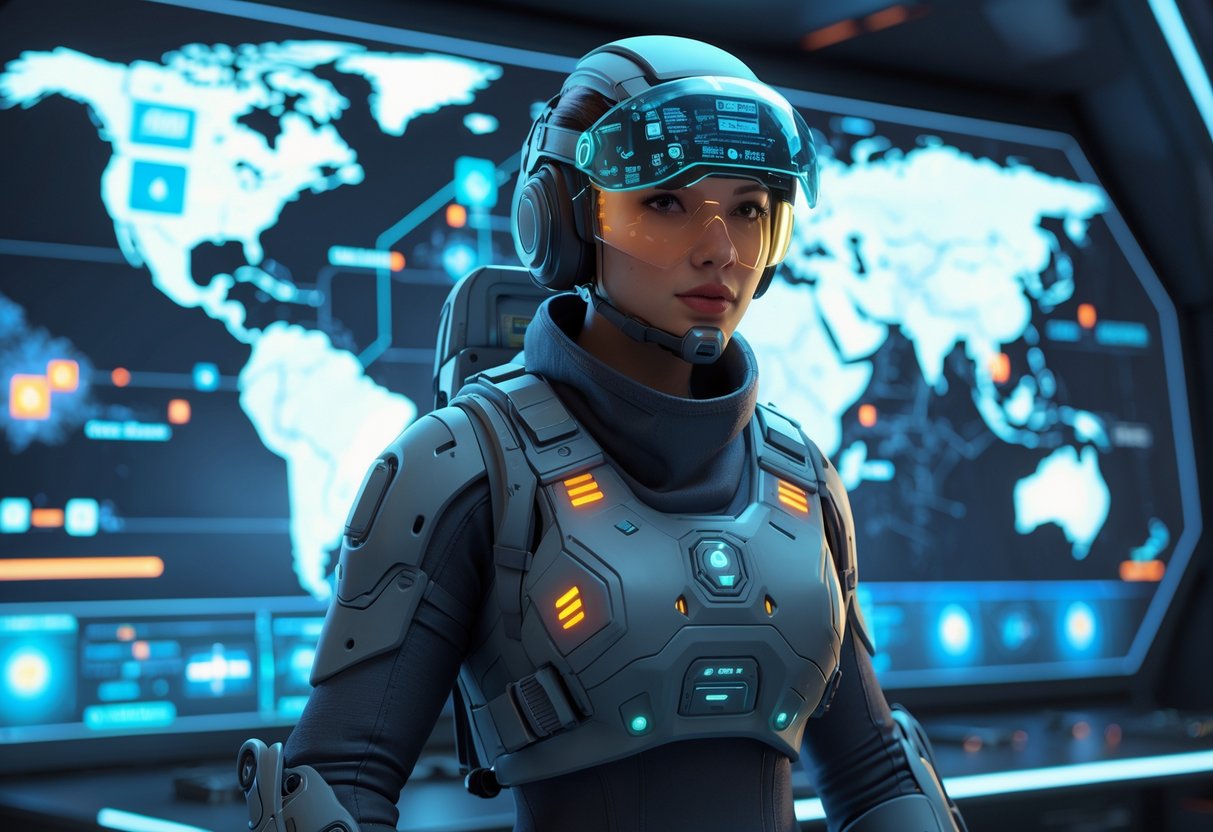
Recon legends completely change how teams gather battlefield intelligence. They scan for enemies and control the map in ways other classes just can’t.
Survey Beacons now reveal enemy positions instead of ring locations. Legends like Crypto, Seer, Vantage, and Bloodhound all excel at tracking down opponents.
Survey Beacon Rework
Season 16 totally changed Survey Beacons. They don’t show future rings anymore.
Now, Survey Beacons reveal enemy locations all over the map. This means Recon legends focus on tracking enemies, not just predicting the next circle.
When you use a Survey Beacon, it gives a snapshot of every enemy’s position at that moment. It works a lot like Crypto’s Map Room.
Any Recon legend can use any Survey Beacon. The scan covers the whole map, not just your area.
This makes Recon legends super useful for mid-game rotations. Teams can check where enemies are before moving or picking a fight.
Revealing Enemy Locations
The map-wide scan gives a huge tactical advantage. You’ll see exactly where squads are before you make your next move.
The scan shows enemy locations in real time when you activate it, but it’s just a snapshot—enemies can move right after.
Smart teams use beacon intel to:
- Avoid crowded spots during rotations
- Plan flanks to catch enemies off guard
- Pick off isolated squads for easy third parties
- Make sure zones are safe before moving in
Quick win: Always scan before big rotations. It helps you dodge bad surprises.
Everyone on your team sees the enemy positions on their map. It’s a game changer for coordination.
Recon Legend Tactics
Each Recon legend brings something different to the table. Bloodhound is great at close-range tracking with their scan and Beast of the Hunt.
Crypto uses his drone for remote surveillance. Pair that with beacon scans, and you get a full map picture.
Seer pinpoints enemies with Heart Seeker and can interrupt with his tactical. His Exhibit ultimate creates zones that reveal movement.
Vantage scouts from high ground with her bat. She’s all about long-range recon.
Heads up: Don’t get lazy and rely only on scans. Enemy positions change fast, and old info can get you in trouble.
Use beacons when things are quiet. Scanning mid-fight usually isn’t worth the risk.
Controller Class: Area Control and Ring Consoles
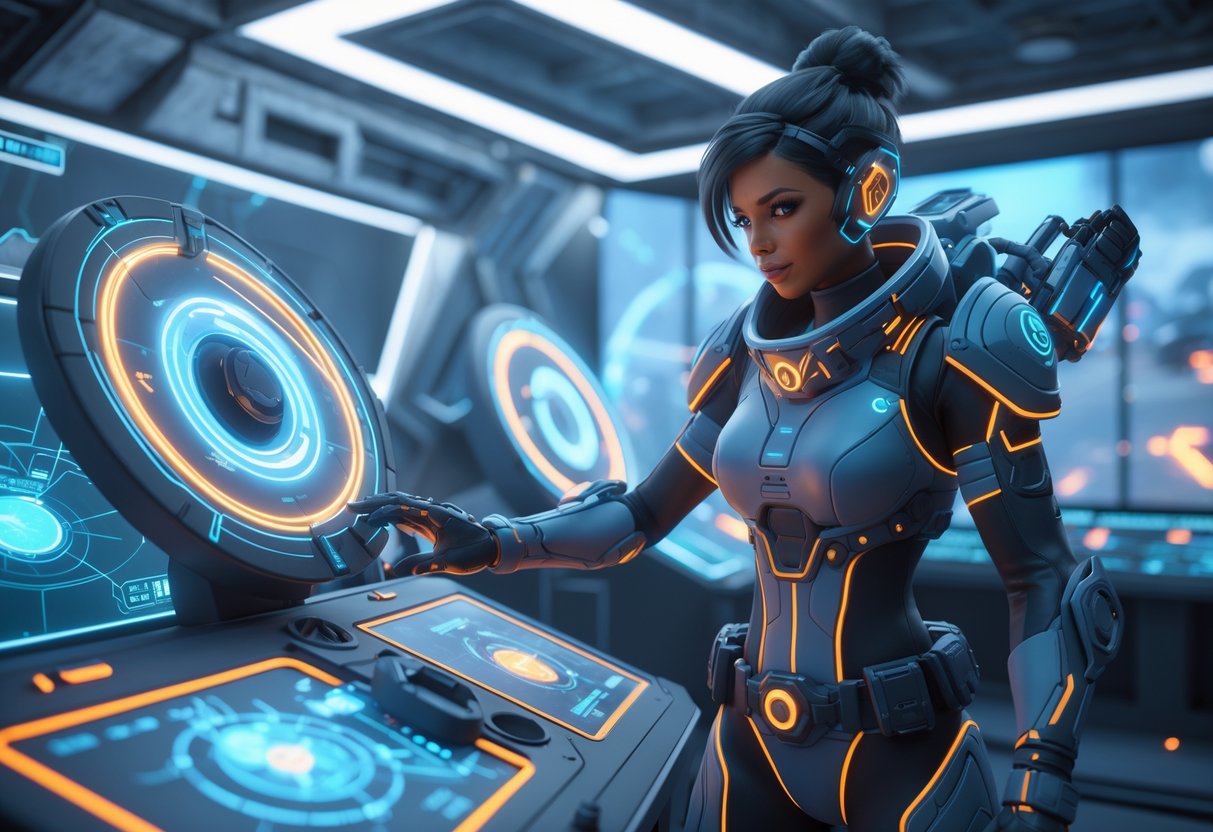
Controller legends lock down areas and help their teams rotate safely. They use Ring Consoles to predict where the next storm circle will close, which is a huge advantage.
Ring Console Usage
Only Controller legends can use Ring Consoles around the map. The current Controllers are:
- Catalyst
- Caustic
- Rampart
- Wattson
These legends see Ring Consoles highlighted on their minimap, so finding them is way easier.
Walk up to a Ring Console and hit interact. It’ll show you the exact location of the next ring on your map.
Quick tip: Share this info right away. Call out safe rotation paths and watch for third-party risks.
Ring Consoles are especially useful in ranked. Knowing where the ring closes keeps you out of bad spots.
Area Setup and Defence Strategies
Controller legends are the best at setting up defenses that force enemies into tough fights. Each one has their own way of locking down areas.
Wattson puts up fences that slow and zap enemies. Her fences work best inside buildings or across doorways. Connect them between cover to make safe zones for healing.
Caustic blocks doors and stairs with gas traps. Place them in corners so enemies can’t destroy them easily. The gas hurts and slows anyone who comes in, and your team can see affected enemies.
Rampart drops Amped Cover walls to block shots and boost your own. Set up walls to cover angles, but leave an escape gap just in case.
Catalyst makes ferrofluid walls that slow enemies and block vision. Use them to split enemy teams or buy time when rotating.
Optimising Team Rotations
Ring Console info changes how you rotate. Instead of guessing, you can plan the safest route to the next zone.
Check consoles early each round. That gives your team the most time to move before everyone else figures it out.
Watch for chokepoints between the current and next ring. These spots often turn into third-party zones as teams rotate through.
Heads up: Enemy Controllers can use consoles too. Don’t assume you’re the only one who knows where the ring is going.
Try to have two rotation plans. If your main route gets blocked, a backup keeps you from panicking.
Move early instead of waiting for the storm. Early rotations mean better positions and less chaos.
Think about your team comp. If you’ve got Pathfinder or Wraith, let them scout ahead while your Controller locks down your spot.
Support Class: Team Survival and Recovery
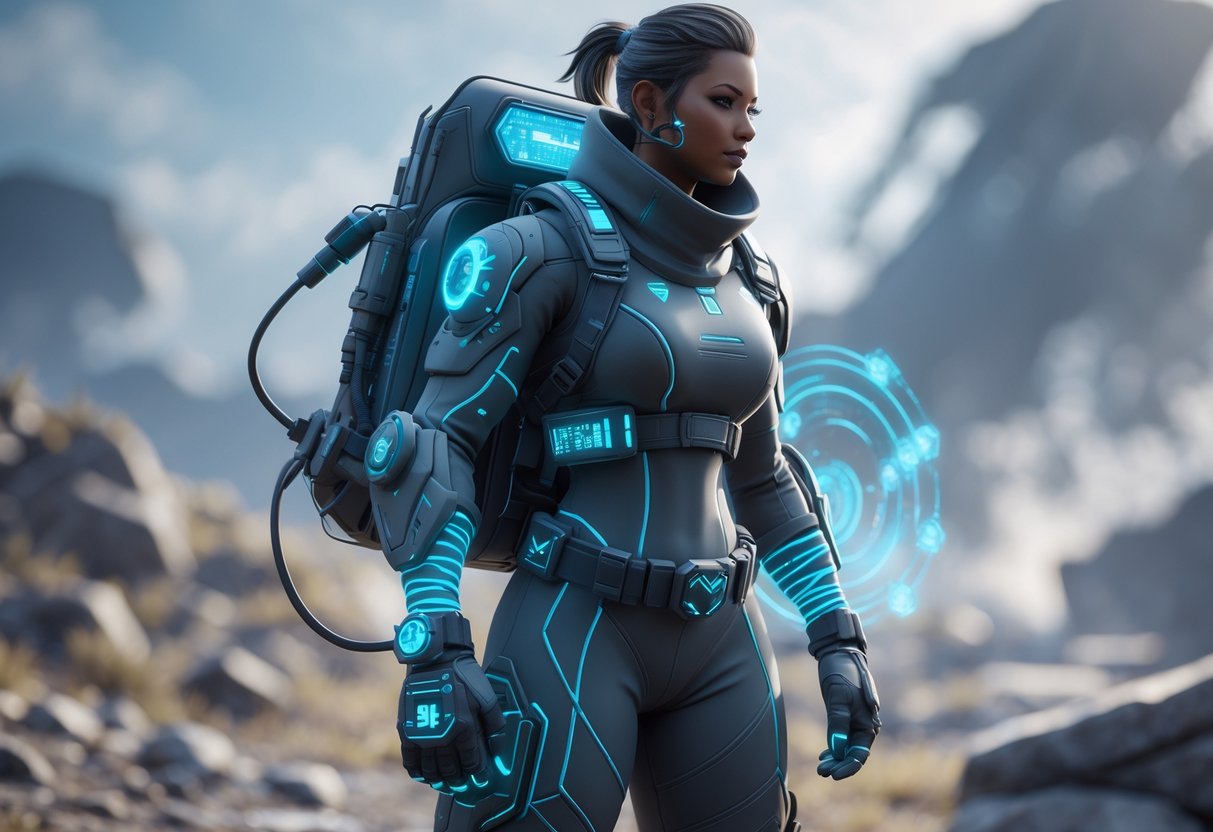
Support legends keep your team alive and stocked up. They’re the best at reviving, grabbing extra gear, and crafting banners to bring back eliminated teammates.
Crafting Fallen Ally Banners
Support legends can craft fallen ally banners at replicators. Normally, you’d have to grab a teammate’s banner from their box within 90 seconds.
But support characters skip that timer. They just craft a new banner at any replicator using materials.
It costs 30 crafting materials per banner. Most of the time, it’s safer and cheaper than running into danger to grab a banner.
Support legends with this perk:
- Gibraltar
- Lifeline
- Loba
- Newcastle
Even if the banner expires, you can still craft a new one. Eliminated teammates get another shot at coming back.
Looting Blue Extended Supply Bins
Support legends open a hidden compartment in blue extended supply bins. Other classes can’t touch it. These bins are all over the map and always have healing items.
Each blue bin gives at least one shield battery in the secret shelf. You’ll also find med kits, shield cells, and sometimes survival gear.
The hidden shelf is at the bottom of the bin’s interface. Only support legends can use it.
What you’ll usually get:
- Shield batteries (guaranteed)
- Med kits
- Shield cells
- Syringes
- Phoenix kits (if you’re lucky)
This gives support teams a real edge in long fights. You get more heals than other squads.
Equipment and Healing Perks
Support legends are built to manage healing and resources. Their abilities focus on protection, recovery, and keeping the squad in the fight.
Most support characters heal faster or give extra shields. They’re the backbone of the team.
These legends work best when they stick close to teammates and don’t rush into fights first. They’re strongest in defensive or drawn-out engagements.
Key strengths:
- Better healing
- Resource management
- Team protection
- Defensive play
The class perks really push this playstyle, giving them exclusive healing supplies and revive options.
Reviving and Supporting Teammates
Support legends usually have built-in perks for reviving or helping teammates during fights. Their kits revolve around keeping everyone going.
Lifeline can revive with her drone and still shoot. Newcastle drops a shield for cover while reviving.
Gibraltar’s dome makes a safe bubble for heals and revives. Loba’s ultimate pulls healing and gear from nearby loot.
These abilities make support legends clutch for getting your team back up after a fight.
Quick win: Always grab crafting materials if you’re playing support. Crafting banners can turn a lost match around.
Class Perks and Inventory Management
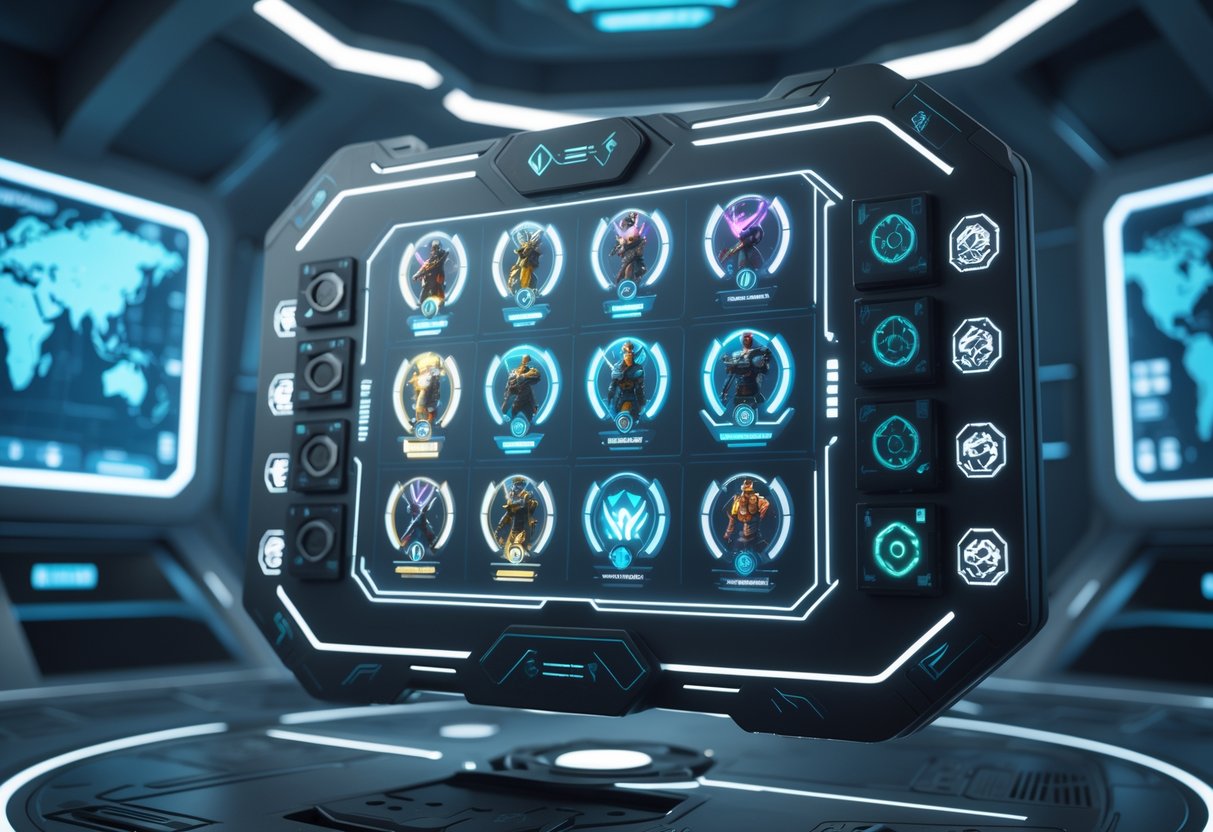
Every class gets unique perks that change how you manage loot and supplies. These perks help you open special loot bins, carry more ammo, and get more out of crafting.
Class-Specific Loot
Different classes can open special loot containers. Assault legends like Bangalore and Fuse get into red supply bins with hidden shelves.
Red bins use smart loot. They give you attachments and ammo that fit your guns.
Support legends like Lifeline and Gibraltar open blue extended supply bins. These have extra heals and survival gear that others miss.
Controller legends get ring data from special terminals. Not loot, but still super valuable for positioning.
Skirmisher legends don’t get special bins, but they can see inside care packages before opening them. That helps you decide if it’s worth the risk.
| Class | Special Access |
|---|---|
| Assault | Red supply bins with weapon attachments |
| Support | Blue extended supply bins with healing items |
| Controller | Ring console terminals for positioning data |
| Recon | Modified survey beacons for enemy scanning |
| Skirmisher | Care package contents preview |
Ammo and Supply Efficiency
Assault legends carry an extra ammo stack in every slot. That means more bullets without filling your bag.
A normal slot holds one stack. Assaults get one more per slot. It’s a big deal for long fights.
Support legends craft fallen ally banners at replicators using crafting materials. Even expired banners work.
This changes how you spend crafting mats. Support players should save some for emergencies, not just gear.
Controller legends don’t need as many supplies. Knowing the ring location helps you avoid wasting heals on bad rotations.
Recon legends get those big 30-second enemy scans. But remember, enemies know you scanned them, so bring extra supplies for the fights that follow.
Survival Tips for Each Class
If you’re playing as an Assault legend, grab weapon attachments as soon as possible. Your red supply bins offer the best weapon upgrades in the game.
Always loot red bins before checking the regular ones. The smart loot system will give you better gear for what you’re using.
Support legends shine when they stick close to crafting stations. Try to remember where these stations are, just in case you need to craft a teammate’s banner.
Always keep at least 75 crafting materials handy for emergencies. You can only use the banner crafting perk if you’ve got enough materials.
Controller legends should use ring consoles early to plan rotations. Good positioning means you won’t need as many healing items later.
Set up your defenses based on ring data, not just reacting when the zone closes.
Recon legends need to be ready for fights right after using survey beacons. Scanning alerts every nearby enemy team for 30 seconds.
Stock up on shields and healing before you scan. You’ll probably have to fight soon after.
Legend Meta Shifts in Season 16
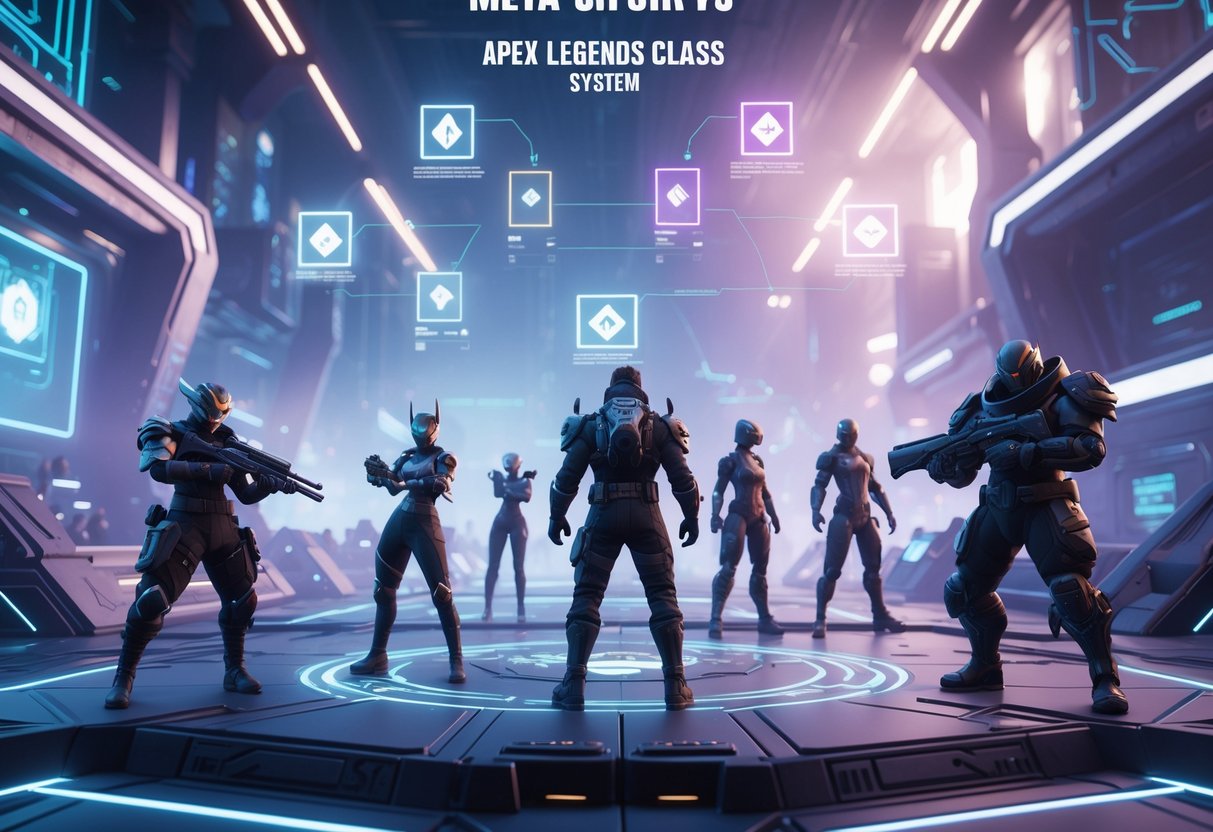
Season 16 really shook up legend pick rates—probably the biggest shift since Apex Legends launched. The class rework changed team compositions and pushed squads away from scan-heavy strategies toward more balanced lineups.
Impact on Competitive Play
The new class system forced competitive teams to rethink how they build squads. Scan legends like Seer and Bloodhound got hit hard with nerfs, so they’re no longer dominating ranked matches.
Seer’s ultimate doesn’t last as long and now has a longer cooldown. His passive Heart Seeker lost the direct pointing indicators, so teams can’t use constant scans to control fights anymore.
Bloodhound got a full rework with the white raven system. Instead of instant scans, ravens now fly toward the nearest enemy when you activate the ability. The hunts take longer, and you lose that instant battlefield edge.
Popular Team Compositions After Season 16:
| Role | Top Picks | Reason |
|---|---|---|
| Assault | Ash, Mad Maggie | Combat initiation tools |
| Support | Lifeline, Gibraltar | Enhanced healing access |
| Skirmisher | Pathfinder, Wraith | Improved mobility options |
Now, teams focus more on positioning and communication instead of just gathering intel. Holding the map matters more than spamming scans.
Synergy and Counterplay
The new class perks created fresh synergy between legends. Assault legends now get extra ammo storage and red weapon bins, making fighters like Mad Maggie better in long fights.
Lifeline picked up some big buffs, and all Support legends can access blue supply bin shelves. Teams can heal up and resupply without risking third parties as much.
Pathfinder and Wraith both got solid buffs as Skirmishers. Their improved mobility opened up new flanking strategies, and teams adapted fast.
Controller legends now get ring info early through Ring Consoles. This shifted late-game positioning from Recon legends to area control picks like Caustic and Wattson.
Since scanning isn’t as constant, teams rely more on audio and visual cues. Coordinated pushes actually work better now, since your position isn’t always revealed.
Popular Legends After the Update
Wraith made a huge comeback after her Skirmisher buffs. Her portal and mobility upgrades put her back in the core rotation for top teams.
Pathfinder shot up in popularity after his rework. The grappling hook changes and Skirmisher perks give teams crazy positioning options.
Season 16 Pick Rate Changes:
- Seer: Dropped from top 5 to bottom tier
- Bloodhound: Saw a big drop in high-level play
- Wraith: Climbed into the top 3 picks
- Pathfinder: Became a must-pick for many squads
- Lifeline: Got more play in ranked
Horizon took some nerfs to her gravity lift, but her Skirmisher status still makes her a good pick for vertical mobility.
Mirage got some love from the class system, but he’s still kind of situational. His Skirmisher buffs help in casual modes more than in competitive play.
The meta’s a lot more diverse now. You don’t have to run scan legends every game—teams can win with all sorts of combos.
Class Composition and Team Building

Building effective squads in Apex Legends comes down to mixing classes that complement each other. The best teams combine combat initiation, team survival, and mobility so they’re ready for anything.
Creating Balanced Squads
A balanced squad uses three different classes to cover all the bases. The Support-Skirmisher-Controller trio is probably the strongest.
Support legends keep your squad alive with banner crafting and supply access. They help the team recover if fights go sideways.
Skirmisher legends give you mobility and escape options. They track care packages and help the team reposition fast.
Controller legends lock down areas and handle ring positioning. They use Ring Consoles to plan rotations and defend key spots.
This combo gives you healing, movement, and defense. Each class fills gaps the others leave. Your team can fight, retreat, or hold ground as needed.
Role Synergy for Success
Different classes work together to pull off team strategies. Combat initiation works best when classes coordinate their abilities.
Assault legends start fights with extra ammo and Red Supply Bin access. They work well with Recon legends who scan before the push.
Support legends keep Assault players in the fight longer with healing and supplies. This combo is great for drawn-out battles.
Skirmisher legends help everyone bail out of bad situations. Their movement helps slower Controller legends set up defenses.
Team survival gets a boost when Support and Controller classes work together. One heals, the other controls the map.
Best Class Combinations
| Composition | Strengths | Best For |
|---|---|---|
| Support-Skirmisher-Controller | Balanced gameplay, strong defence | Ranked matches |
| Assault-Recon-Support | High damage, good intel | Aggressive playstyles |
| Skirmisher-Controller-Support | Great mobility, strong survival | End-game circles |
Support-Skirmisher-Controller is still the top pick overall. It covers most situations without any glaring weaknesses.
Assault-heavy squads fit aggressive players but don’t handle attrition well. You need good positioning and quick fights.
Don’t double up on the same class. You’ll end up with gaps in your abilities and fewer tactical options.
Key Locations and Map Objectives
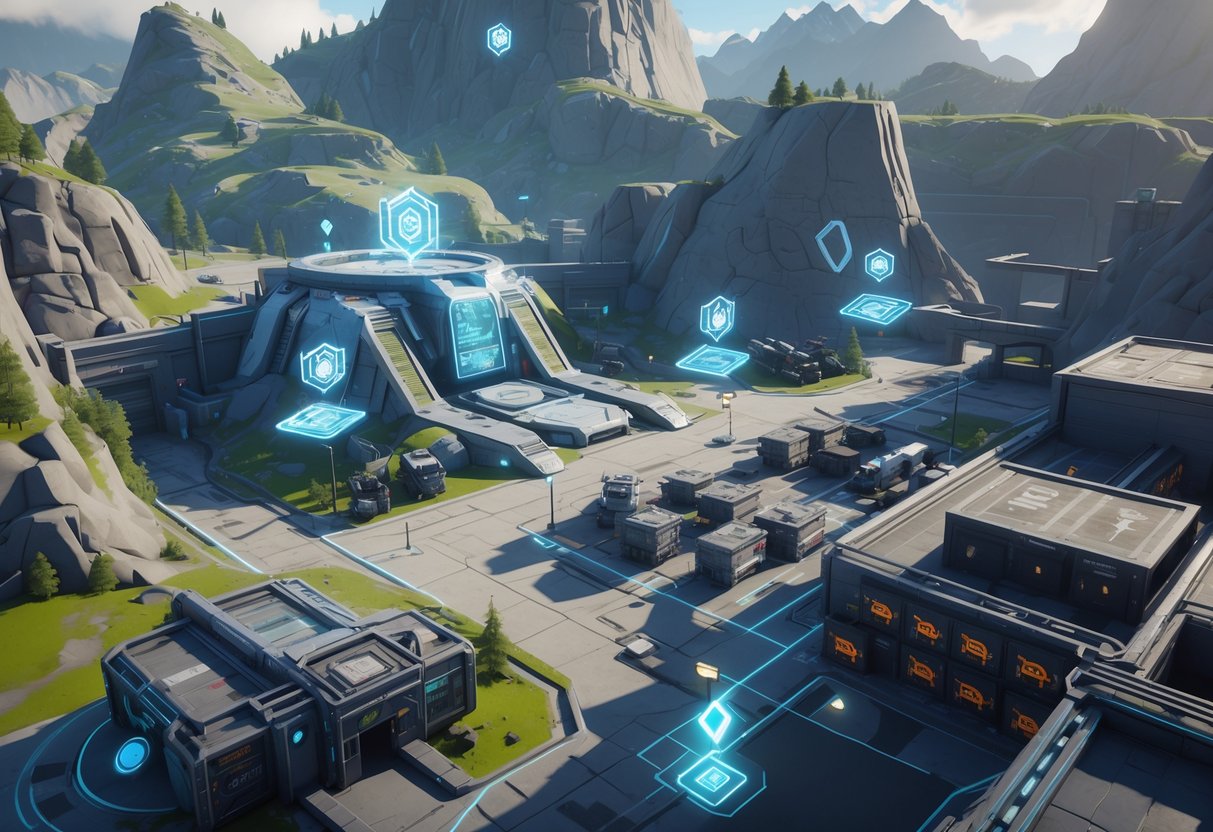
Every class in Apex Legends benefits from different map locations and objectives. Knowing where to go and how to use beacons helps your team gain the upper hand.
Priority Map Spots by Class
Each class should focus on certain areas when planning rotations and looting. Assault Legends want spots with lots of red bins for attachments and extra ammo.
Fragment on World’s Edge and The Rig on Storm Point have tons of red bins. These places give Assault players the gear they need to push hard.
Support Legends should look for blue bin clusters to stock up on healing and respawn gear. Staging near crafting stations works, since you can craft banners for 30 materials.
Recon Legends get the most from central map spots near survey beacons. High ground like Containment on Storm Point gives great sightlines after a scan.
Controller Legends want buildings close to ring consoles for early zone info. Compounds with multiple structures are best for holding down areas.
Skirmisher Legends should stick to mobility routes between care packages. Open spots with ziplines or jump towers help them loot fast and escape if things go south.
Utilising Beacons and Consoles
Survey beacons and ring consoles give you crucial info if you use them right. Survey beacons let Recon Legends reveal every enemy on the map.
Scan early to avoid crowded areas. The info is real-time, so move right after scanning.
Ring consoles show Controller Legends the next zone before anyone else. Scan as soon as you land to grab the best defensive spots.
Storm Point has ring consoles near Cascade Falls and Command Centre. These areas have plenty of buildings for Controllers to set up.
Pick your scan timing carefully. Other teams can spot you using these stations, so you might give away your position. Always have a way out before you scan.
Rotational Strategies
Smart rotations depend on your class and squad makeup. Recon teams should rotate after scanning to steer clear of hot zones.
Controller squads need to move right after ring scans. Getting to the next zone first lets you claim the best buildings before others show up.
Don’t just rotate in a straight line even if you know where enemies are. Most teams zigzag between loot spots on their way.
Support Legends should grab crafting materials during rotations. Keep 30 on hand for banner crafting if someone goes down.
Plan your movement around your team’s classes. Mixed-class squads can stop at different beacon types as they move. Single-class teams should focus on speed and avoiding fights they don’t need.
Future of the Class System in Apex Legends
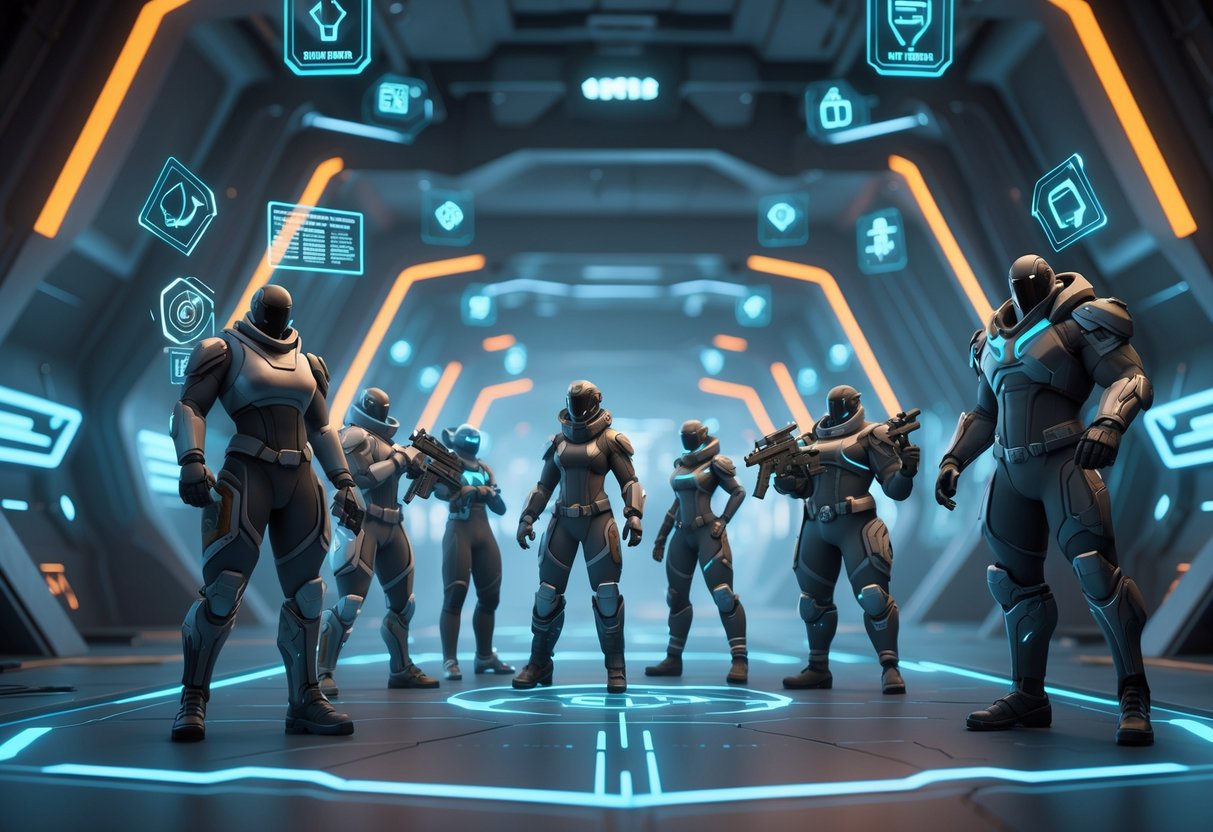
The class system keeps evolving as Respawn tweaks balance and adds new gameplay. We’ll see more updates to class perks, smoother integration for new legends, and changes based on player feedback and competitive stats.
Potential Updates and Expansions
Respawn tweaks class perks often, responding to feedback and competitive trends. They’ve proven they’ll make big changes when necessary.
We’ve already seen some perk tweaks since Season 16 dropped. The Assault class’s extra ammo perk, for example, got dialed back a bit so it wouldn’t break ranked play.
Future updates could bring:
- New class perks to swap out weaker ones
- Perk changes for better balance
- Seasonal tweaks as the meta shifts
- Quality-of-life fixes for current systems
The devs keep an eye on pick and win rates for all classes. If one starts to dominate, they step in to balance things out.
How New Legends Are Integrated
Respawn follows a set process to fit new legends into classes. They look at each legend’s abilities and role before deciding where they belong.
Usually, the process goes like this:
- Ability analysis – Devs review the legend’s tactical and ultimate skills
- Role assessment – They figure out what kind of role the legend fills
- Class assignment – The legend lands in the class that fits best
- Testing phase – Internal tests make sure the class perk fits their kit
Take Catalyst—she joined the Controller class because her skills focus on area control. Respawn matches character design with class identity pretty well.
Sometimes a new legend forces updates to the class system. If someone doesn’t fit, the devs might add new perks or tweak existing ones.
Evolving Class Perks
Class perks keep evolving as the game grows. Expect regular tweaks to keep every class relevant in all game modes.
Right now, perk changes focus on:
- Balancing power between classes
- Making perks useful in different situations
- Player satisfaction with how perks feel
- Mixing up the meta across skill levels
Some perks might get a full rework if they’re underwhelming. The Skirmisher class perk, which shows high-value items in supply drops, has gotten some criticism for not being as strong as others.
Future updates will probably address these issues. Respawn wants every class to feel meaningful and fun to play.
The class system is here for the long haul—they’re committed to keeping Apex Legends balanced and deep.
Frequently Asked Questions
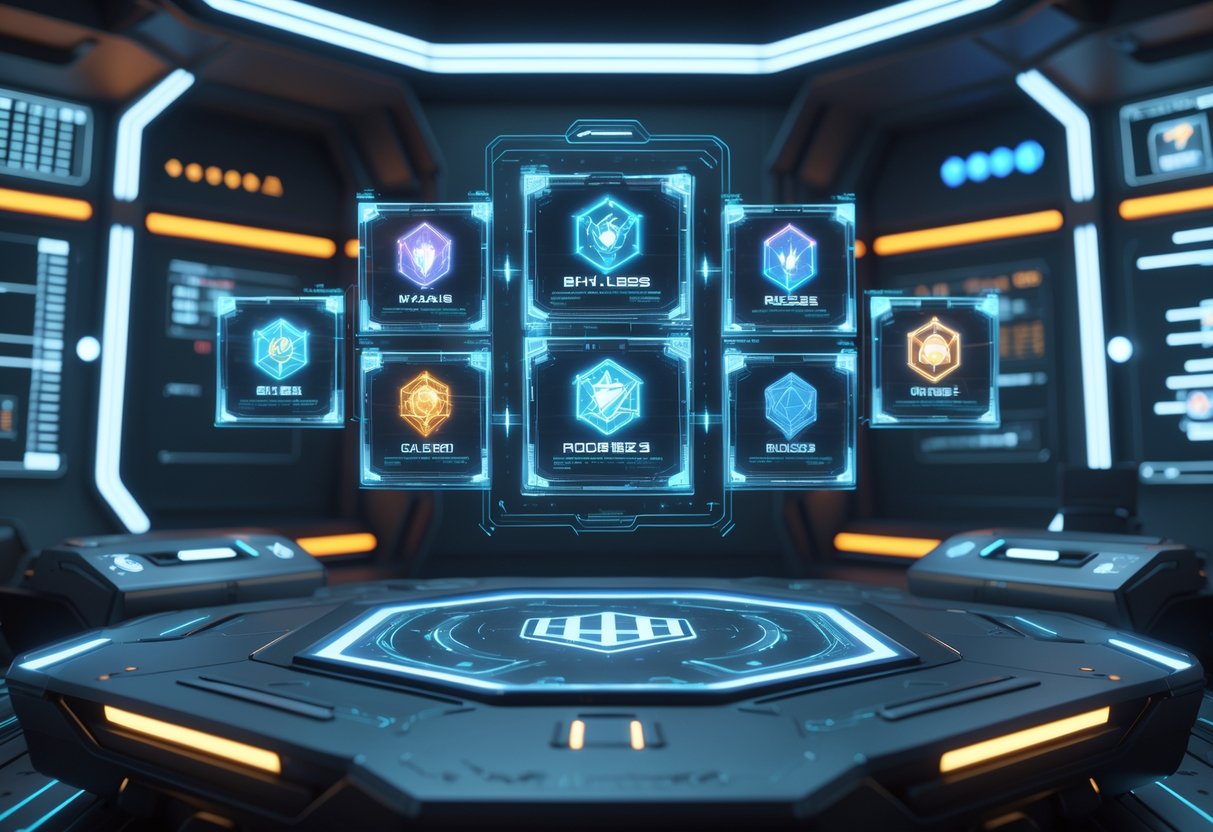
Players always have questions about how each class works in matches and how the system shapes team strategies. Here are answers to the most common questions about class abilities, new character releases, team roles, tier rankings, the impact of new legends, and getting the most out of Support class picks.
What abilities do the different classes in Apex Legends have?
Each class brings its own perks and really changes up your playstyle. Assault legends grab extra ammo per slot and pop open those red supply bins for loot.
Skirmisher characters peek inside care packages and spot whether someone already looted them. You can track enemy movements this way and snag high-tier weapons.
Recon legends scan special survey beacons to reveal all enemies for 30 seconds. Sure, the scan tips off enemies, but the intel you get is huge.
Controller characters use ring consoles to find out where the next safe zone will be. That makes rotations and setting up defenses way easier.
Support legends open the secret shelves in blue supply bins and can craft expired teammate banners at crafting stations. They’re the lifeline, keeping teams alive longer than most.
How often are new characters introduced to Apex Legends?
Respawn Entertainment usually drops a new legend at the start of each season. Seasons stick around for about three to four months.
So, you get maybe three or four new faces each year. Sometimes, though, they focus on reworking the game instead of adding someone new.
For example, Season 16 brought a big class system overhaul instead of a new legend. Respawn often puts balance first over just adding more characters.
The devs really pay attention to roster balance when planning new releases. If a new legend would mess up the meta, they’ll hold off.
Could you explain the role of each class in a squad?
Assault legends kick off fights and push enemies with confidence. Their ammo perks and supply bin access mean they rarely run dry in long battles.
Skirmisher characters scout ahead and help the squad escape sticky situations. They keep an eye on care packages to gear everyone up.
Recon legends gather info before fights break out. Their scans help teams dodge ambushes or set up their own traps.
Controller characters handle positioning and zone control. With ring console access, they guide rotations and lock down strong spots.
Support legends keep everyone healthy and geared. They can revive fallen teammates—even when banners have expired—and always find extra healing.
The best squads mix classes that work well together. A controller with recon intel can set up nearly perfect defenses.
Which Apex Legends characters tend to be at the top of the tier list, and why?
Bloodhound almost always lands near the top because their tracking just works—no complicated setup needed. Their scans fit into any situation.
Wraith is still a favorite thanks to her escape portal and phase shift. High-level players love how quickly she can reposition in the middle of a fight.
Gibraltar brings a defensive dome and arm shield that make him a must-pick in ranked matches. His fortified passive cuts down incoming damage a lot.
Pathfinder’s grappling hook lets him zip around the map like nobody else. Skilled Pathfinder mains can escape almost anything.
Tier lists change every update as the meta shifts. Buffed legends sometimes rocket up the rankings for a bit.
Pro players really shape the tier lists. When top teams lean into certain legends, everyone else tends to follow.
How does the latest character released change the dynamic of the game?
New characters always add mechanics that shake up the usual strategies. Teams scramble to figure out counters for abilities they haven’t seen before.
The meta shifts as players test out new team comps with the latest legend. It usually takes a few weeks for things to settle down.
Respawn sometimes releases new legends a bit on the strong side to get people to try them out. Then, balance patches arrive not long after to smooth things out.
Existing legends often get tweaks when a new one drops. That helps keep the roster from feeling lopsided.
The class system now forces new legends into specific team roles. This makes their impact a little more predictable than in the old days.
Players start to find counters as they get used to the new legend’s tricks. That early power usually fades once everyone adapts.
Are there any tips for mastering the abilities of the support class in Apex Legends?
Put your teammates’ survival first, even if it means skipping those aggressive pushes. Support legends really shine when they keep squads alive, not when they chase kills.
Try to memorize where crafting stations sit on each map. You’ll rely on them to bring back teammates after their banners expire.
Whenever you rotate, make sure you check blue supply bins. Those hidden compartments? They usually have healing items or survival gear your squad will thank you for.
Stay tucked behind cover during fights. If you go down, you can’t help anyone.
Talk with your squad about banner retrievals. Sometimes it’s better to craft expired banners than to risk a dangerous recovery.
Get comfortable with quick revives and healing rotations. Support players need to stay sharp and efficient, especially when third parties show up.
As gaming expert James Connolly puts it, “Support players win games through consistency, not flashy plays.” So, just focus on keeping your team ready for the next fight.

